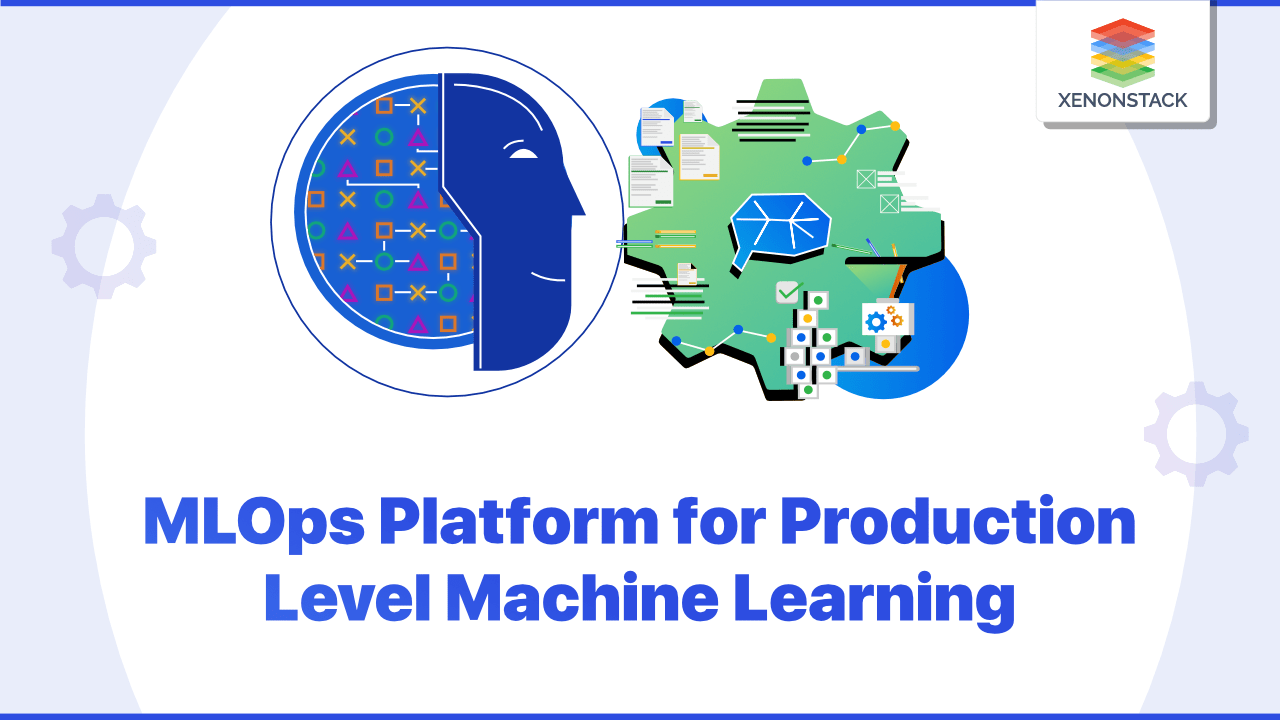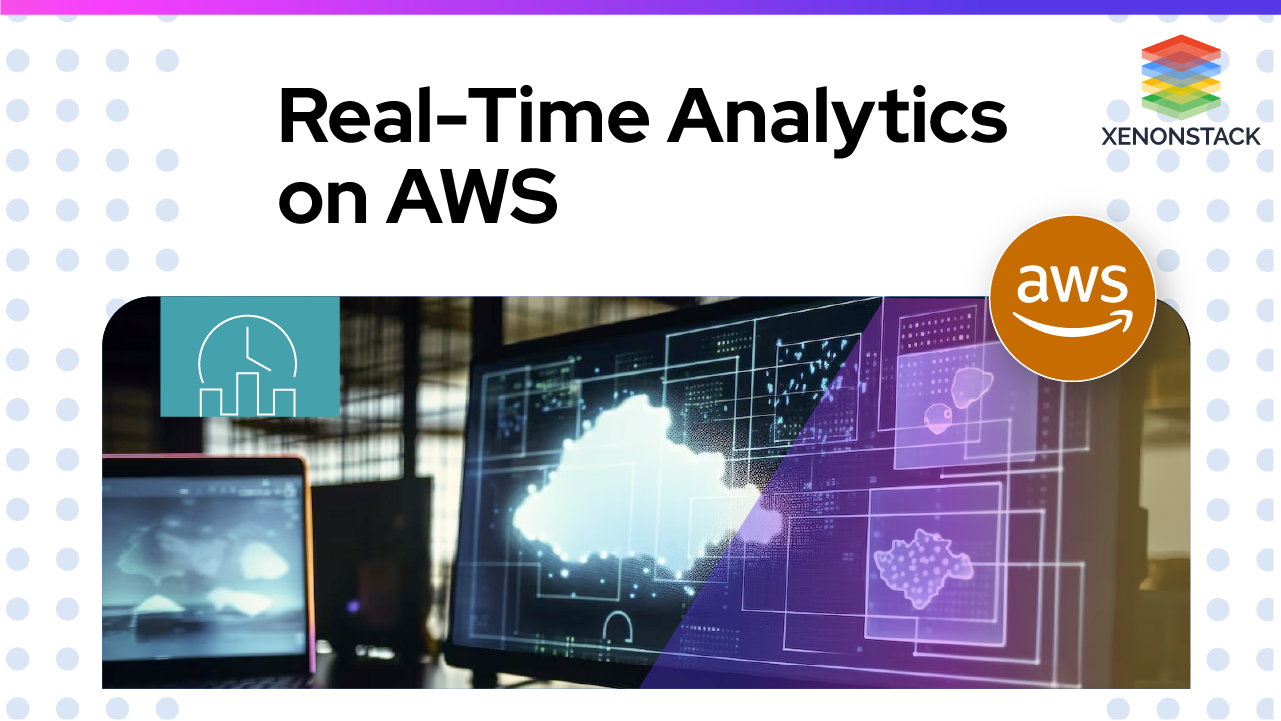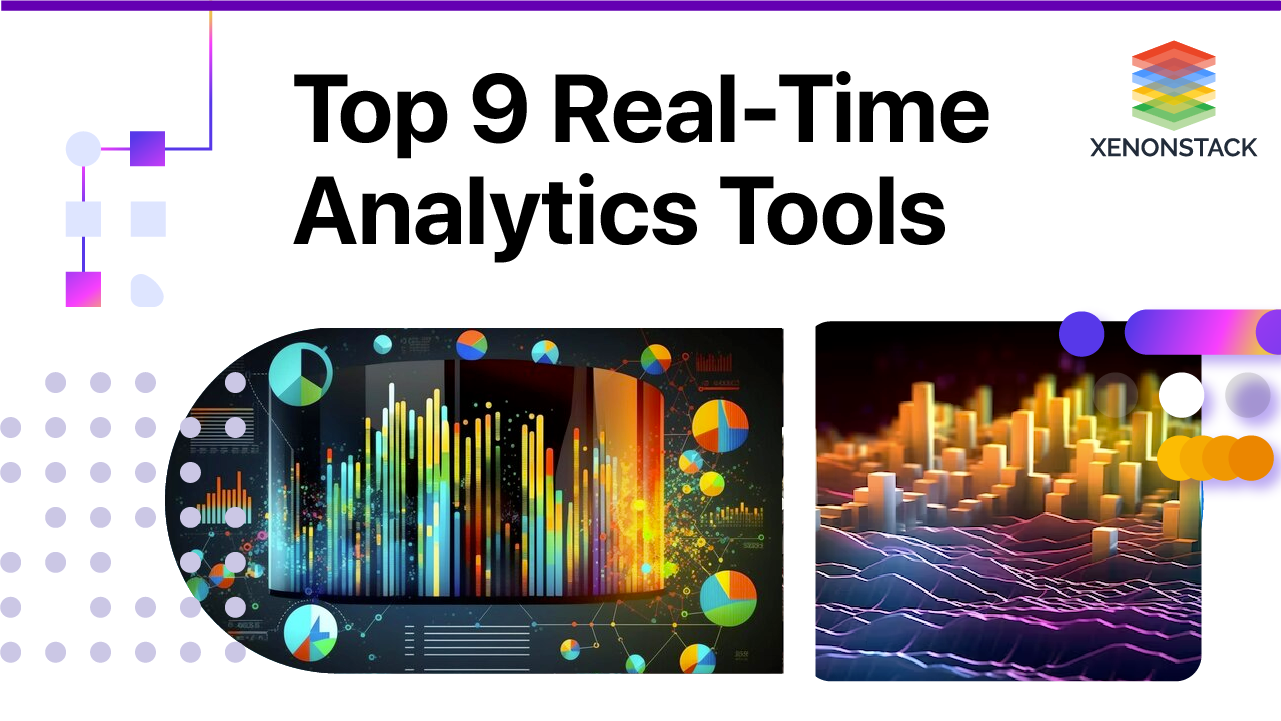
What is MLOps?
Artificial Intelligence and ML applications are no longer the buzzwords of research institutes; they are becoming an essential part of any new business growth. According to business analysts, most organizations are still unable to deliver AI-based applications successfully. They are stuck in applying data-science models (which were trained and tested on a sample of historical data) into applications that work with the real-world and massive data.
An emerging engineering practice called MLOps can address such challenges, as the name indicates that it aims to unify ML system development (Dev) and ML system operation (Ops). Automating MLOps means automation and monitoring at all ML system construction steps, including integration, testing, releasing, deployment, and infrastructure management.
According to the survey, it is observed that data science is not focussed on data science tasks. They spend most of the time on other relevant tasks such as data preparation, data wrangling, management of software packages and frameworks, infrastructure configurations, and integration of various other components.
Data scientists can quickly implement and train a Machine Learning model with an excellent performance on an offline dataset by giving relevant training data for particular use cases. However, the real challenge is not to build an ML model. But the problem lies in creating an integrated ML system and continue operating it in production.
Keep track of modifications and model performance, allowing us to focus on domain-specific tuning and model performance. Explore MLOps Processes and Principles
What are the Challenges of MLOps?
The machine learning Life Cycle starts with the business problem. After understanding the business problem and establishing the success criteria, delivering an ML model to production involves the subsequent steps. These steps can be performed manually or can be accomplished by an automatic pipeline.
- Data Extraction - Data scientists collect the relevant data from various data sources for the ML task.
- Data Analysis - EDA (Exploratory data analysis) is performed to understand the available data for building the ML model.
This process leads to the following -
Understanding the data schema and characteristics that are expected by the model. Identifying the data preparation and feature engineering that is needed for the model.
- Data Preparation - The data is prepared to perform ML tasks. This preparation involves data cleaning in which Data scientists split the data into train/test/validation sets. There is a need to make missing values imputable, multiple encodings, many transformations, feature engineering, feature interaction, feature selection, and zillion other things to solve the particular task. The output of this step is the data split in the prepared format.
- Model Training - Once preprocessed data is ready, data scientists implement different algorithms with the prepared data to train various ML models. They don't know which model will perform best on the dataset on which they are working. So they started applying some hypotheses based on their understanding of problems and mathematical knowledge of algorithms. The output of this action is a trained model.
- Model Evaluation - The model is evaluated to check the performance of model.
- Model Validation - The model is verified to be fit for deployment. Its predictive performance will be tested against a specific baseline model.
- Model Serving - The validated model is then deployed and productionize to an environment to serve predictions.
- Model Monitoring - The predictive model performance is monitored to invoke a new iteration in the ML process potentially.
Here the challenge is when Data scientists deploy the model from a business problem statement; Data scientist loses focus on how managing is more difficult than building and deploying.
In real life, business applications need to handle constantly changing an enormous amount of real-time data. ML is an iterative process. It takes a lot of time as Data scientists have to repeat it again and again. They must meet adequate response times, along with supporting a large number of users as well. Here, the challenge is that the team must focus on the process only. But when dealing with hundreds or thousands of code lines, they have their own set of difficulties to manage.
Earlier, the Data Science team's goal was to produce an ML model. But today, by seeing the productionize challenges, it seems like the first step to bringing data science models to production.
Machine Learning has become so prevalent that it is now the go-to method for businesses to handle various issues. Click to read about Fairness in Machine Learning
Emerging Challenges of Big Data
Data scientists begin with sample data followed by various ML pipeline steps such as data analysis, data preparation, feature engineering. Usually, they work on Jupyter notebooks or use AutoML to train/test/validate models and identify hidden patterns. At a particular point, they need to prepare the models on large data sets. This is where situations start to become complicated. They came to know that most of the tools that give excellent performance while working on CSV files or small data and can load data into memory can't work at scale, and they need to re-built everything to fit models in distributed platforms.
The other challenge team is facing that they are spending most of the time creating features from raw data, and in several cases, the same feature extraction task is repeated for multiple projects or by diverse teams. The expenses are further increased if there is any change in datasets, the derived data, and models' changes. The experiments need to repeat every time to get the required accuracy.
Further, new challenges arise when the data science team tries to deploy models into production. They find that data exist differently and can't use the same Machine learning methodologies on dynamic data.
What is MLOps Framework?
The MLOps framework is a set of applications, tools, and techniques to simplify and modernize the end-to-end machine learning (ML) lifecycle by organizing information into delivery and maintenance standards. An MLOps project consists of several aspects, including:
- Version Control: Version control allows teams to track changes to code, data, and standards over time and share work efficiently again. Version control tools like Git provide a way to manage different versions of code, files, and builds and have everyone working on the same version.
- Testing: Testing is an important part of the MLOps framework as it ensures that the machine learning model meets the requirements. Evaluation includes generating test data, evaluating model performance on that data, and testing different hyperparameters and settings.
- Delivery: Delivery includes packaging and shipping the machine learning model to production. Deployment tools like Docker and Kubernetes provide a way to package and deploy machine learning models and manage underlying processes.
- Maintenance: Maintenance is essential to ensure the machine learning model meets the requirements in production. Monitoring tools like Prometheus and Grafana offer ways to monitor performance patterns, identify anomalies, and trigger alerts when performance has previously exceeded thresholds.
Overall, the MLOps framework enables organizations to build and deliver more reliable machine learning models while reducing the time and costs associated with implementing and maintaining machine learning models. Using the MLOps process model, organizations can improve collaboration between multiple teams and stakeholders, ensure consistency and trust in machine learning operations, and unlock the potential of AI/ML.
Unify ML workflow to standardize and streamline the machine learning life cycle. Taken From Article, ModelOps vs MLOps
What are the different types of MLOps frameworks?
Many MLOps frameworks are on the market, from open source to enterprise solutions. Each framework has advantages and disadvantages depending on an organization's needs and requirements. Some of the most popular MLOps are:
Kubeflow
Kubeflow is an open-source MLOps framework based on Kubernetes. It provides tools and best practices for building and deploying machine learning models at scale, including management, testing, deployment, and visualization support.
- Pros: Open source, extensible, customizable, and community-driven.
- Cons: The learning curve requires Kubernetes expertise.
MLflow
MLflow is an open-source MLOps framework that provides an integrated platform for managing the machine learning lifecycle, from data preparation to model deployment. It includes version control, technical testing, deployment and maintenance support, and integration with popular machine learning libraries such as TensorFlow and PyTorch.
- Pros: Open source, easy to use, integrates with popular machine learning libraries.
- Cons: limited scalability, fewer customization options.
AWS SageMaker
AWS SageMaker is a commercial MLOps framework that Amazon Web Services (AWS) provides. It provides tools and services for building, training, and implementing machine learning models, including support for management, automated evaluation, deployment, and visualization.
- Pros: Scalable, easy to use, integrates with other AWS services.
- Cons: Expensive, limited customization options.
Databricks
This commercial MLOps project provides an integrated platform for building and deploying machine learning models based on Apache Spark. It includes version control, technical testing, deployment and maintenance support, and integration with popular machine learning libraries such as TensorFlow and PyTorch.
- Pros: Extensible, easy to use, integration with popular machine learning libraries.
- Cons: Expensive, limited customization options.
As a result, organizations should weigh the pros and cons of different MLOps systems before choosing the one that best suits their needs and requirements. Open-source systems like Kubeflow and MLflow offer greater choice and community support, while commercial solutions like AWS SageMaker and Databricks offer greater scalability and integration with other services.
What are the best practices for MLOps?
- Shift to Customer-Centricity – Today's end customer does not want to know about the brand, product, selection, or model. Still, their target is how they can achieve their goals by working on real data business challenges.
- Automation – Automates data pipelines to ensure continuous, consistent, and efficient business value delivery to avoid rewriting custom prediction code.
- Manage Infrastructure Resources and scalability – Applications should be deployed so that all resources, infrastructure, and platform-level services should be appropriately utilized.
- Monitoring - Track and visualize all models' progress across the organization in one central location and implement automatic data validation policies.
What is the Architecture of MLOps?
The MLOps (Machine Learning Operations) architecture is a set of practices and procedures for managing the machine learning lifecycle, from data preparation to model deployment and maintenance. It aims to provide a standard and flexible way of working on learning models and to ensure that they can be easily maintained and updated over time. The MLOps architecture has several key features, including:
- Data Management: It includes collecting, maintaining, and organizing data in machine learning models. It may also involve creating a data transfer system to automate data flow from the source to the model.
- Model Development: It involves designing machine learning models using various algorithms and techniques. It will also include selecting appropriate hyperparameters, model validation, and model performance evaluation.
- Model Deployment: This involves integrating machine learning models into a production environment, such as a web or mobile application. It will also involve creating an API to allow other applications to access the model.
- Model Monitoring: This includes regularly monitoring the machine learning model to ensure it works as intended. It will include creating an alert system to alert developers when the model does not meet expectations.
An effective MLOps operation must be supported by various tools and technologies, such as management models, automated measurement systems, and continuous integration/continuous (CI/CD) pipelines. By providing a structured and structured approach to managing machine learning models, the MLOps architecture can help organizations realize the full potential of machine learning and stay ahead of the world's rapid evolution in AI and machine learning.
What are the best MLOps Tools?
The listed below are the best MlOps Tools:
- Neptune.ai
- Amazon SageMaker
- Valohai
- Iguazio
- MLflow
- Domino Data Lab
- H2O MLOps
- Cloudera Data Platform
Monitor the model so that developers can monitor and take necessary action if any problem is found, such as feature drift, fairness, accuracy, etc. Read more about MLOps Roadmap for Interpretability
XenonStack for MLOps
For the ideal adoption of ML across organizations, there requires a standardization of the machine learning workflows, so there is no difficulty in implementation.
- ML Model Lifecycle Management - Akira AI provides MLOps capabilities that help build, deploy, and manage machine learning models to ensure business processes' integrity. It also provides consistent and reliable means to move models from development to production environment.
- Model Versioning & Iteration - As models are utilized in a particular industry, they need to be iterated and versioned. To deal with new and emerging requirements, the models change based on further training or real-world data. MLOps solutions provide capabilities that can create a version of the model as needed, provide notification to users of the model about changes in version, and maintain model version history.
- Model Monitoring and Management - As the real world and its problems continuously change, it is challenging to match up to the world where Data scientists still struggle with small data. MLOps solutions help monitor and manage the model's usage continuously, its consumption, and results to ensure that accuracy, performance, and other results generated by that model are acceptable.
- Model Governance - Models that are used in the real-world need to be trustworthy. MLOps platforms provide capabilities to audit, compliance, access control, governance, testing and validation, change, and access logs. The logged information can include details related to access control such as publishing models, why modifications are done, and when models were deployed or used in production.
- Model Security - Models need to be protected from unauthorized access and usage. MLOps solutions can provide the functionality to protect models from being corrupted by infected data, being destroyed by denial of service attacks, or being inappropriately accessed by unauthorized users.
- Model Discovery - MLOps platform provides model catalogs for models produced as well as a searchable model marketplace. These model discovery solutions will provide sufficient information to track the data origination, significance, quality transparency of model generation, and other particular model circumstances.
Future of MLops
The future of MLOps will likely be affected by many events and technologies. Here are some key developments to watch:
- AutoML and Auto-Tuning: AutoML, which includes the creation of automated machine learning algorithms, will be more available in the coming years. Auto-tuning, which involves using machine learning to improve the performance of existing models, will also become more common.
- Model Interpretation: As machine learning models become more complex and their impact on society increases, so does the need for model interpretation. This includes making machine learning models more transparent so users can understand how they work and make decisions.
- Federated Learning: Federated learning involves training a machine learning model on data distributed across multiple devices or servers without transferring the data to a central location. This approach allows the creation of machine learning models while helping to protect the privacy of sensitive data.
Overall, the future of MLOps is characterized by further expansion of technology, disclosure, and privacy, as well as tighter integration with the existing DevOps process. To keep up with these developments, organizations must follow new trends and technologies in MLOps architectures and processes and be willing to experiment and innovate to stay afloat.
tinyML is a branch of ML that focuses on creating and implementing machine learning models on low-power, small-footprint microcontrollers such as the Arduino. Taken From Article, What is TinyML?
A Holistic Approach
The MLOps architecture is a set of practices and procedures that enable organizations to effectively manage their machine learning operations, from development to deployment and maintenance. It combines DevOps principles with the specific requirements of machine learning, including data management, training models, and testing. The MLOps architecture and framework are essential in managing end-to-end machine learning operations, enabling organizations to optimize, deploy and manage their machine learning models. As machine learning continues to play an essential role in many industries, MLOps will become increasingly important to ensure these operations are successful.
- Discover here about Quantum Machine Learning
- Explore more about Automated Machine Learning


